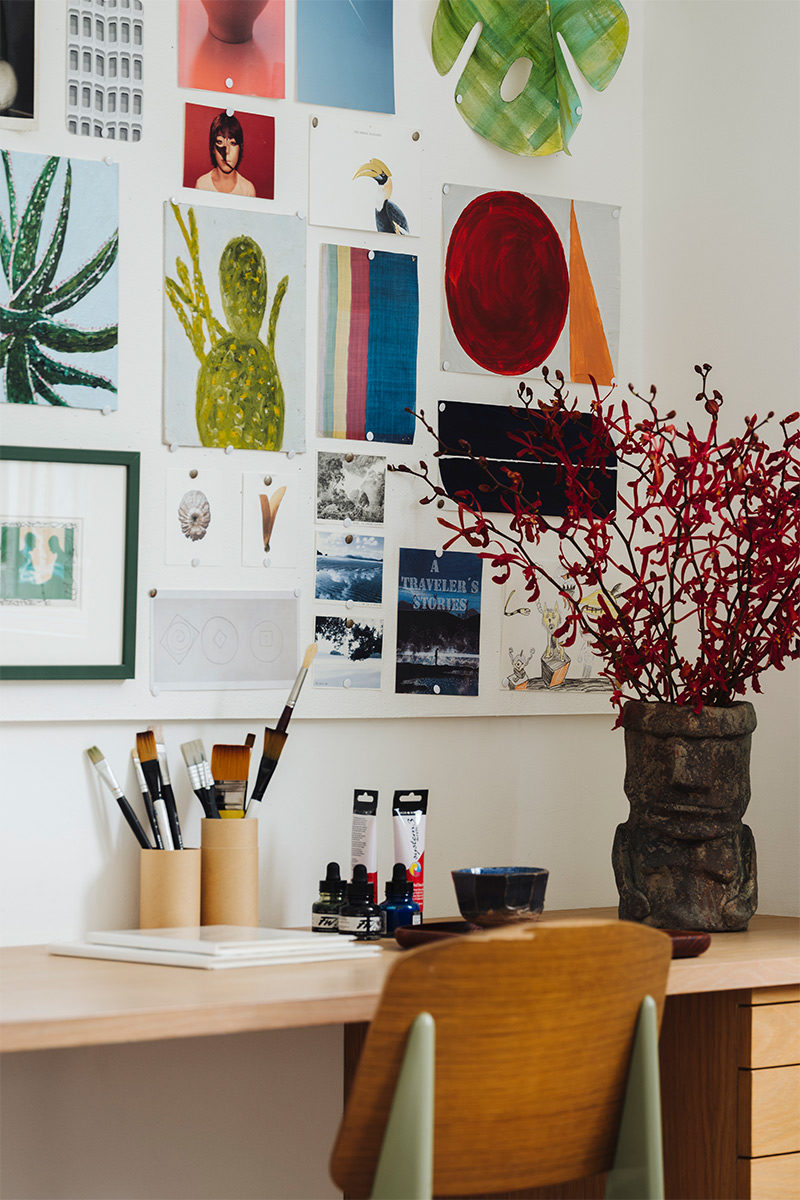When it comes to interior design, 2022 has been the year of curved lines. “Looking back, this year was very much about arches, curved walls and soft curved furniture. Mineral plaster was also popular. These trends create a very soothing, almost resort-like feeling in the home,” shares Naoko Takenouchi, co-founder of integrated design firm Takenouchi Webb.
The pandemic-ridden last few years, she believes, have definitely impacted the way we choose to design our spaces. “With people being unable to travel during the pandemic, and work and living spaces merging together, people wanted to make space for relaxation. The trends in 2022 naturally mirror that,” she explains.
“Conscientiousness about ingredients, materials and methods of making is now spreading to interior design”
As for how interior design trends will evolve in 2023, Takenouchi chooses not to pinpoint specific colours or aesthetics. Instead, she takes a different approach—examining how our wants and needs have shifted over the course of the past few years. What we require from our living spaces, in the same vein, will shift too.
The amount of time we have spent at home in recent years, she believes, will lead to greater incorporation of personal hobbies into our living spaces, as well as an openness to eclecticism when it comes to designing a home. A growing spotlight on sustainability may also have a part to play in the choice of furniture and decor we pick.
Here, she predicts the top three interior design trends of 2023, and shares more about how they might shape a home.

1 / 3
Integrating hobbies into home design
“We have noticed a rise in people wanting to integrate their hobbies into their living space, and I think we’ll be seeing much more of that in the coming year,” Takenouchi shares. This could take the form of dedicated yoga and meditation spaces for wellness-oriented individuals, or a home with a bigger kitchen and dining area for those who love to cook.
“Especially given how much time we have spent at home the past few years, people have realised the importance of creating a home that they enjoy staying in,” she elaborates. “It’s about taking your passions and intentionally making them part of your daily lifestyle.”

2 / 3
Diversified design styles
Rather than maintaining one constant aesthetic throughout the house, Takenouchi predicts that we will see homeowners incorporating a multitude of styles into their homes. Individual rooms might exude different ambiences—like a study with a dark colour palette in contrast to a home that is generally white and brightly-lit, or a particularly opulent powder room that stands out.
She explains, “As people spend more time at home, they like to feel different moods within their house. By incorporating varying styles into their living space, people can switch up the environment they are in, and the feeling they get from the space, just by moving from room to room.”
To ensure that the home still maintains a cohesive look, Takenouchi advises that it’s important to identify what you really like—as opposed to just thinking about how particular pieces of furniture or decor may serve a certain design aesthetic. “My own home is quite eclectic. It has many different styles, but what ties everything together is that they’re all elements that I enjoy,” she shares. “No matter what styles you mix, if you’re able to recognise what you are drawn to, everything will come together naturally.”

3 / 3
A focus on origin
In the coming year, Takenouchi also sees people becoming more conscious about the origin of the furniture and objects in their home. She attributes a large part of this to sustainability efforts. “Consumers are becoming more aware of the materials used in furniture and decor, and the impact these can cause on the environment. We already see this happening in the food and fashion industries, where people are careful to check for ingredients, materials and methods of making—and that conscientiousness is now spreading to interior design.”
A preference for unique pieces of furniture and homeware also plays a part. “People now like to seek out one-of-a-kind pieces. Instead of buying from big manufacturers, they prefer to support local makers and artisans. They want to know the stories behind the things they buy,” she concludes.





